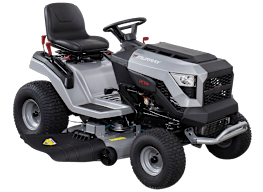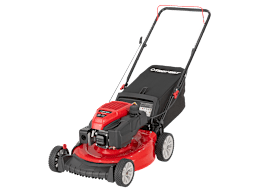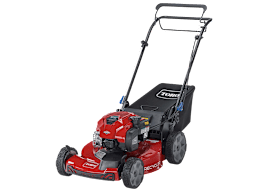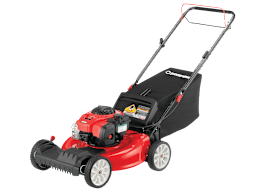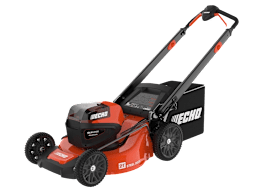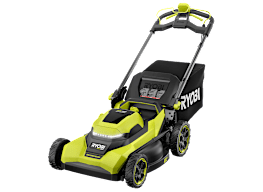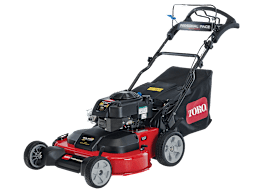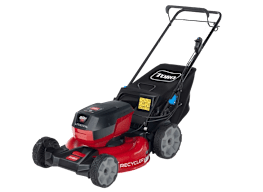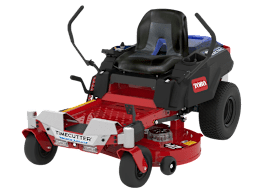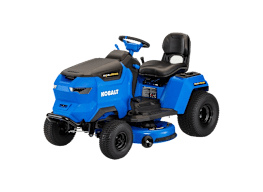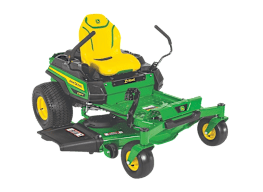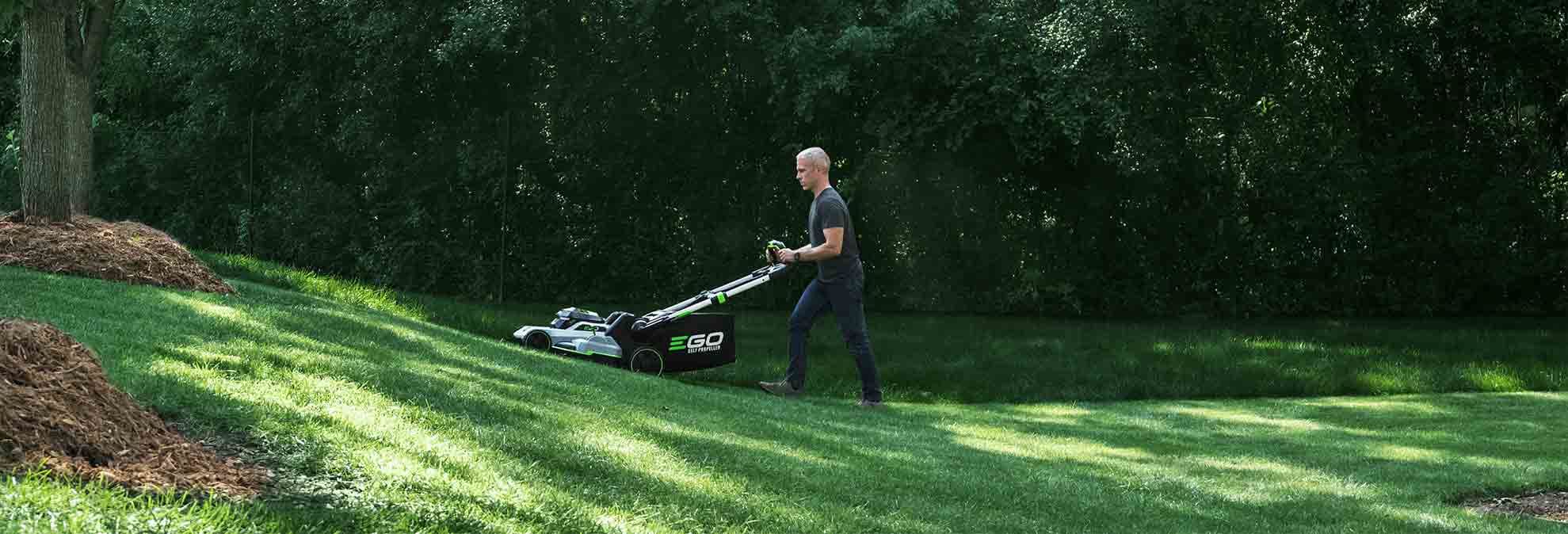
Lawn Mower & Tractor Buying Guide

To test lawn mower and tractors, our testers and engineers travel every winter to specially prepared grounds in Florida, where we plant 1,800 pounds of grass seed (predominantly annual rye, prized for its dense growth). That’s where we put the mowers to work, cutting 500,000 square feet of grass using three modes: mulching, side-discharging, and bagging (accumulating a total of 3,000 pounds of clippings). We cut both level turf and slopes to get a feel for how each model handles the terrain. We also review convenience features.
In our view, a mower that works well now but conks out in a year or two doesn’t—ahem—cut it. So the Overall Score for each lawn mower and tractor in Consumer Reports’ ratings incorporates not only its test performance data but also predicted reliability and owner satisfaction ratings from our latest member surveys. These surveys, fielded in the fall of 2022, 2023, and 2024, leverage data on more than 46,000 lawn mowers and tractors that members purchased between 2014 and 2024.
Our tests show that you don’t have to pay top dollar to get a great mower or tractor. The price difference between our top-scoring machines can be as much as thousands of dollars. But especially at the lower end of the price spectrum, paying just a little more can often buy better performance. Read on for more about the types of mowers, features to look for when choosing a model, and popular lawn mower brands.
Types of Lawn Mowers
Your options for a lawn mower range from $250 gas push models to gas- or battery-powered lawn tractors and zero-turn mowers that can cost upward of $5,000.
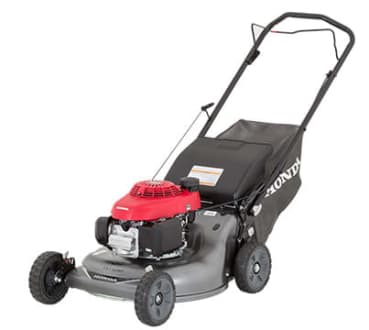
Gas Lawn Mowers
Gas-fueled mowers aren’t limited by battery capacity and can cut much larger yards in one go. They come in both push and self-propelled models and usually cost less than their battery-powered counterparts, though you might spend more in the long run on fuel and maintenance. Most gas mowers cut a 21- or 22-inch swath, about an inch more than their battery-powered counterparts.
Best for: Yards of a quarter-acre to a half-acre.
Pros: They can handle long or thick grass and weeds, and can bag, side-discharge, and mulch clippings. They also cost less and run much longer than their battery-powered counterparts.
Cons: Gas mowers are noisy (we recommend ear protection), produce emissions, and require more frequent maintenance.
Upkeep: Gas mowers require regular tune-ups, oil changes, and blade sharpening.
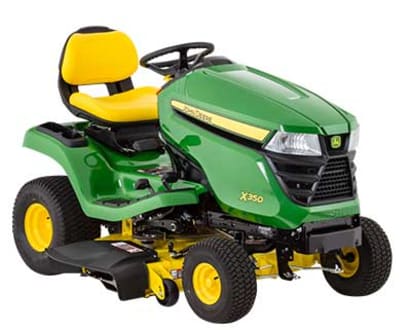
Gas Lawn Tractors & Riders
These gas-powered tractors and riders can cut two to three times faster than simple push mowers, making them best suited for larger lawns. Most models mow a 42- to 48-inch swath and can bag, mulch, and side-discharge clippings. An increasingly popular wide-deck version cuts 54 inches or more in a single pass. A small subset of this category, rear-engine riders, bridges the gap between walk-behind mowers and tractors. They’re typically cheaper than tractors, with smaller cutting decks.
Best for: Yards larger than half an acre.
Pros: Steering them is easy and familiar because they use a wheel, just like a car. The best models have comfy, high-backed seats and make it easy to engage the blades and adjust the cutting height.
Cons: Bagging kits cost extra and tend to be expensive, which is why many tractor owners mow in the side-discharge mode. And even today’s cleaner machines create exhaust emissions and require lots of storage space. Tractors have a wider turning radius and lower top speed than zero-turn-radius mowers.
Upkeep: Gas mowers require regular tune-ups, oil changes, and blade sharpening.
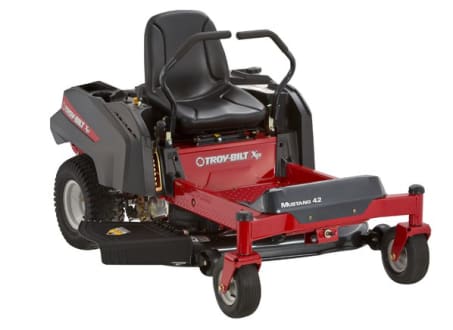
Battery and Gas Zero-Turn Mowers
Zero-turn-radius mowers offer more nimble handling and higher top speeds than tractors. Rather than a steering wheel, you control a zero-turn with a pair of levers; pushing one forward and the other rearward causes the mower to turn in place. They can side-discharge, bag, and mulch clippings, and typically mow a 42- to 50-inch swath.
Best for: Yards larger than a half-acre without too many hills.
Pros: They’re easy to maneuver around obstacles, such as trees and flower beds. Their easy handling and high top speed help you get across your property quickly. Zero-turn mowers are usually gas-powered, but an increasing number of battery-powered zero-turn mowers have entered the marketplace in recent years.
Cons: Zero-turn mowers cost more than most tractors, and not all of them cut as well as tractors. Rear steering wheels can tear up grass during turns. They’re not well suited for hilly properties because they can lose traction and may be hard to control on slopes. Their lever controls also require practice. And though they offer a higher top speed, that won’t necessarily save you time; you’ll still want to go 3.5 to 4 mph to get an even mow. Bagging kits can be pricey.
Upkeep: Gas engines require tune-ups and oil changes. Battery models need at least blade sharpening.
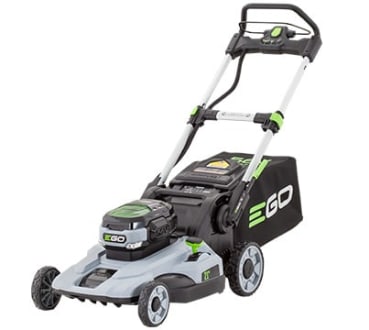
Battery Mowers
The best battery-powered mowers cut grass just as well as their gas counterparts. Battery mowers use rechargeable lithium-ion battery packs and are available in both push and self-propelled models. They’re much easier to store and maintain than gas mowers, and our testing has shown that the best battery-powered mowers cut grass just as well as their gas counterparts. Most of these mowers cut a 20- or 21-inch swath.
Best for: Yards of one-third of an acre or less.
Pros: Most mower batteries are interchangeable with other outdoor power tools from the same brand. They also start with push-button ease, don’t produce exhaust emissions, and run more quietly than gas models. And they don’t require oil changes or frequent tune-ups.
Cons: They have a limited run time, usually enough to cut a third of an acre. Battery-powered self-propelled models use up to 20 percent of the battery charge to power the wheels, so you won’t be able to cut as much grass unless you buy a larger or additional battery. And they’re pricier than gas models, though you’ll recoup that cost over time.
Upkeep: Battery mowers require little upkeep beyond blade sharpening.
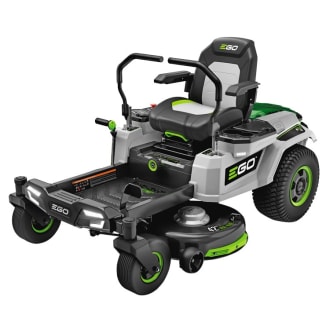
Battery Riding Mowers
Battery riding mowers, which encompass zero-turn designs and some traditional riding mower versions, operate the same as their gas cousins but on cordless electric (battery) power. Their decks range from 42 to 54 inches. CR tests have found that the top-rated battery riding mowers perform as well as—or better than—gas riding mowers and tractors. A small subset of this category, rear-engine riders, bridges the gap between walk-behind mowers and riding mowers, with smaller cutting decks. We have found their cutting to be less effective than that of zero-turn and riding mowers.
Best for: Yards larger than half an acre—and for zero-turn versions, yards without too many hills.
Pros: With no gas engine, these mowers require far less maintenance than gas tractors and riding mowers. You’ll get a quieter ride, save money on fuel, and help the environment by reducing carbon emissions.
Cons: Battery riding mowers can be more expensive than traditional gas tractors and riding mowers. Among zero-turn mowers, however, the price difference between battery and gas versions is shrinking.
Upkeep: As with a gas-powered model, you’ll have to keep the blades sharp and your eye on the tire pressure. But you won’t need to change the spark plugs or motor oil. You’ll need to make sure that the battery remains charged in the off-season and isn’t exposed to temperature extremes to prevent deterioration.
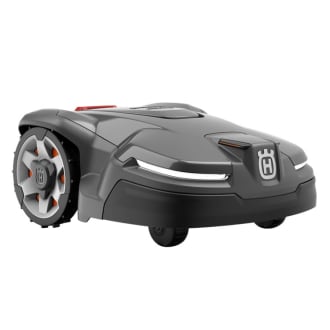
Robotic Mowers
Low-profile battery-powered robotic mowers maneuver on their own around your yard. They cut only within the boundaries you select, either by using GPS navigation or sensors attuned to wires installed around your lawn, then automatically return to their charging docks. These units have low decks and aren’t designed to cut high grass.
Best for: Lawns that are mowed frequently.
Pros: Robotic mowers can save you the time and effort of regular mowing. They can even mow in the middle of the night. Because they’re battery-powered, they’re quiet and won’t pollute. You can control them remotely.
Cons: These units are relatively costly compared with push mowers, with most priced between $500 and $2,500. Deck sizes can be narrow—typically around 9 inches—so it’ll take a while to cut even a small lawn. With models that require you to wire a boundary, setup can take several hours. In earlier CR tests, we found that their random wandering doesn’t create the smooth, even lines of a traditionally mowed lawn. For robotic mowers to avoid getting stuck in a depression or at the bottom of a sharp rise, your lawn must be uniformly flat.
Upkeep: A robotic mower’s underside needs regular cleaning and the blade needs replacement once or twice a season. Check the wiring and charging station periodically to make sure they’re intact and still running properly. A mini storage “garage” can protect the charging station and docked mower from falling branches and the elements, though not necessarily from animals.
How to Choose a Lawn Mower
Depending on how much you want to spend, there’s a wide selection of mower features and options available. Here, we highlight the important considerations when choosing different types of mowers.
Walk-Behind Mowers
- Push vs. self-propelled: Push mowers tend to be less expensive. Self-propelled models draw energy from the engine or motor to power the wheels, which makes them easier to maneuver if you have a large lawn or live on a sloped lot.
- Drive type: All-wheel drive offers the best traction on slopes, followed by rear-wheel drive. Front-wheel drive, which you’ll see on most models, is well-suited for flat surfaces but isn’t the best choice if you bag clippings. As the bag fills, it can cause the front wheels to lose some traction.
- Blade-brake clutch pedal: When you release the handlebar, the clutch stops the blade but not the engine, so you don’t have to restart the engine to empty a full bag of clippings or to move a branch or other obstacle.
- Washout port: A washout port makes cleaning the mower’s underside easier. It accepts a hose connection for clearing clippings beneath the mower deck, eliminating the need to tip the machine.
- Electric start: On gas models, this feature lets you start the engine with push-button ease rather than yanking a pull cord. All electric mowers start this way.
- Travel mode: On self-propelled models, this feature lets you control the blades and mower movement independently. The mower can then pull you where you want to go without engaging the blades around rocks, sandy areas, pavers, or other parts of the yard that you don’t want to mow. This helps protect the blades and the surfaces—and possibly your back if your walk is long.
- One-lever height adjustment: This feature lets you raise or lower the entire mowing deck at once.
- Folding handle: Models with a folding or collapsing handle require less space to store.
- Upright storage: Almost all electrics can be stored vertically in a garage. Some gas models have special engine seals that allow for upright storage, too, without the risk of oil or gas leaking out.
- Interchangeable battery: Some manufacturers are making string trimmers, leaf blowers, chainsaws, and even snow blowers that can accept the same battery that powers their lawn mowers. That can save you money if you can buy the second tool without a battery.
Riding Mowers
- Hour meter: This indicates how long the engine has run and can help track when it’s time for an oil change or other maintenance. A few models can link to a smartphone app via Bluetooth to keep track of maintenance and order parts.
- Fuel meter: A tractor with a cutout that allows you to see your fuel level—preferably from the seat—is ideal.
- Cruise control: As with a car, cruise control lets you lock in a speed.
- Hydrostatic transmission: This allows tractors to vary their ground speed quickly and smoothly without the need to move any additional controls. Most are now controlled with a pedal.
- Electric power takeoff switch: This switch lets you engage the blades without pulling a lever, a feature that’s a bit more convenient and can extend belt life.
- A safety switch for reverse: Cutting in reverse can pose a hazard to others in the area. Mowers with a safety switch for reverse require the user to intentionally press a button or turn a key to allow that function.
- Tight turning: Four-wheel steering lets tractors turn almost as tightly as zero-turn-radius riders. Newer two-wheel-steering tractor models can turn more tightly than earlier models but still not as tightly as four-wheel or zero-turn-radius riders.
- High-back seat and cup holder: The first is more supportive and comfortable than a conventional seat, and the second is for when you’re sweltering in the hot sun—you’ll appreciate it.
Lawn Mower & Tractor Brands
Ariens makes commercial and higher-end residential lawn equipment, focusing on riding mowers. The company also owns Gravely, another high-end riding mower brand. Ariens products are available at Home Depot, Lowe’s, True Value, independent dealers, and select online retailers.
Black+Decker manufactures battery-powered and corded lawn mowers. With deck sizes that range from 12 to 20 inches, Black+Decker push mowers are suited for smaller yards. They’re sold at Home Depot, Lowe’s, and Walmart. Prices range from $120 to $400.
Craftsman is one of the market leaders in mower and tractor sales. All Craftsman mowers are made by MTD. Craftsman lawn tractors run the price spectrum from rear-drive models around $1,300 to full-featured, hydrostatic drive units that cost more than $4,000. Most Craftsman lawn tractors feature Briggs & Stratton engines, and the 42-inch-deck models are among the most popular. A majority of Craftsman walk-behind mowers are gas-powered, but the company also offers corded and battery-powered models. Most models have side-discharge, rear-bag, and mulching modes. Craftsman also markets a line of garden tractors and zero-turn mowers. Craftsman products are sold at Ace Hardware and Lowe’s.
Cub Cadet produces and markets lawn mowers, tractors, and zero-turn mowers. It makes both self-propelled and push mowers with engines made by Cub Cadet and Honda. Models are sold at Home Depot and independent dealers. Cub Cadet’s parent company is Stanley Black+Decker.
Ego manufactures 21- and 22-inch push and self-propelled mowers, all operating on 56-volt batteries, as well as some battery riding mowers. The mowers are sold at Lowe’s with prices from $450 to $1,200.
Greenworks focuses exclusively on battery-driven power tools, including robotic lawn mowers, moderately priced walk-behind lawn mowers, and a handful of riding mowers. Most of Greenworks’s walk-behind mowers have mowing decks ranging from 13 to 25 inches wide, and its riding mower decks are 42 inches wide. The brand is sold on Amazon and at Best Buy, Costco, Lowe’s, Menards, and Tractor Supply Co.
Honda is a prominent engine maker and sells a premium line of lawn mowers. Its lawn mowers are known for innovative features and tend to come at top-dollar prices. Honda makes gas-powered lawn mowers with unique drive systems, mulch control, and steel and plastic decks. They’re among the most expensive on the market and are sold through dealers and at Home Depot.
Husqvarna makes tractors, zero-turn mowers, and robotic mowers. It has a large dealer base, and Lowe’s and Sears carry the brand. Its lawn tractors are fully featured and have deck widths in the widely sold 42- to 54-inch range. Most models have hydrostatic drive systems and Briggs & Stratton engines.
John Deere makes and markets one of the bestselling lines of gas lawn tractors at retail. Its lawn tractors are fully featured and have deck widths from 42 to 54 inches. Most models have hydrostatic drives and Briggs & Stratton engines. John Deere lawn tractors are sold at dealers, Home Depot, and Lowe’s. The company also markets a line of garden tractors and zero-turn-radius mowers, including an electric (battery-powered) zero-turn mower.
Murray is owned by Briggs & Stratton, one of the top engine makers. Its walk-behind mowers are aimed at the value segment of the market.
Ryobi is a leader in the battery-powered and corded outdoor power tool market. It manufactures push, self-propelled, ride-on, and zero-turn mowers. Walk-behind mower prices range from $200 to $900. Ride-on prices range from $3,200 to $7,000. Ryobi lawn mowers are sold at Home Depot.
Toro makes and markets lawn mowers and zero-turn mowers under the Lawn-Boy and Toro names. Most Lawn-Boy and Toro lawn mowers are self-propelled and fully featured, and they have Briggs & Stratton and Honda engines. Toro mowers are sold through dealers and at Home Depot. Lawn Boy mowers are sold at Menards and through dealers.
Troy-Bilt, owned by Stanley Black+Decker, makes and markets self-propelled and push lawn mowers, tractors, and zero-turn mowers. Engines are made by Briggs & Stratton, Honda, and Troy-Bilt. Models are sold at Home Depot and independent dealers.
















